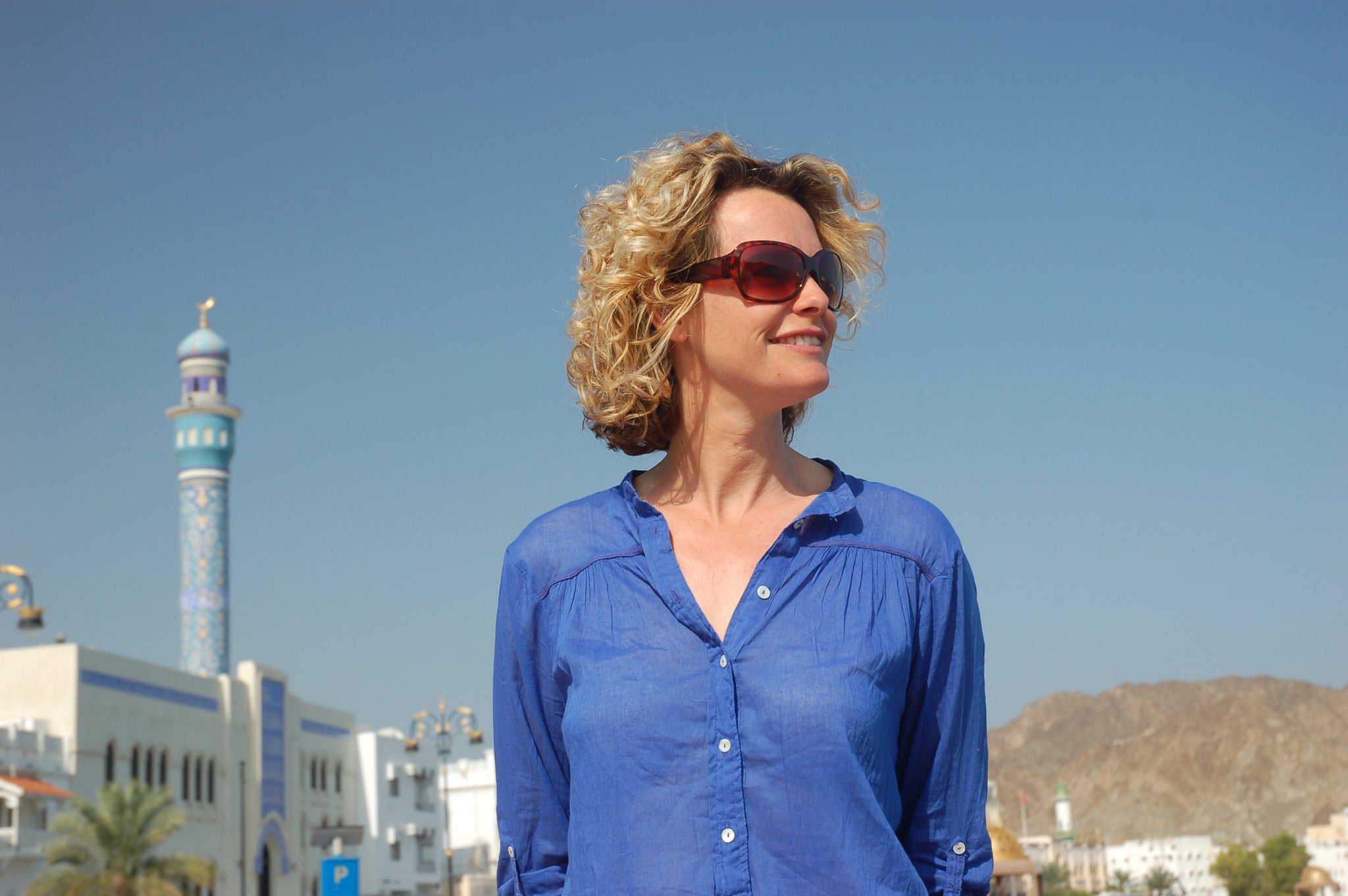Humble Oman
Storytelling is an integral part of Omani life and TV presenter Kate Humble tells her tale of how she discovered Oman.

I remember my childhood holidays with great fondness. There were walks up Glastonbury Tor, paddling on the beach at Skegness, cycle rides around Sark. We rarely went abroad and when I embarked on my right-of-passage Eurorail trip, aged 17, I didn't have a passport and had to get a temporary one from the post office. But somehow, despite the unexotic nature of these holidays and the fact that I was horribly travel sick and found flying terrifying, I developed an unquenchable wanderlust that lasts to this day.
My travels have been inspired by many things. Writers like Dervla Murphy, Hilary Bradt, Eric Newby have all played a role. So too have articles in magazines, photographs in National Geographic, television programmes. But I do want my experience of a country to be as authentic as possible and nothing beats local knowledge. When my Bedouin guide first told me about the Frankincense Trail, and how Frankincense was harvested on the Arabian coast and carried overland by camel through Yemen, Saudi Arabia, Jordan, Israel and Palestine, I laughed and said, ‘I'd never be allowed to do that!'
'We could dress you up as a Beduoin,' he said. 'No one would know!'
Impractical as the idea was, it wouldn't leave me. When asked by a television producer if there was a journey I particularly wanted to take I didn't even need to think about it.
'But I don't think it would be possible,' I concluded. I was wrong. After many months of research and careful negotiation I set off with a small team to Oman.
Frankincense is still grown and harvested in Southern Oman’s Dhofar Mountains above the Omani port of Salalah and in the 13th century the region was enormously prosperous thanks to the incense trade witnessed by today’s archaeological sites. It is one of only two places on the Arabian peninsula (the other being Yemen) that has a monsoon. During the summer the landscape is transformed from a palate of browns to a riot of greens. As a consequence it is one of the best areas for wildlife, particularly birds. Offshore, dolphins, whales and turtles are frequent visitors, although one quick early morning dip in the sea one morning before filming wasn't enough to allow me to see any of them. We drove from the coast past the trains of camels and up into the rugged highlands and climbed a rocky path to meet the man who would show me how to tap the small, gnarled trees for their fragrant sap. Steppe Eagles soared overhead in a cloudless sky. I knew already this short time in Oman would not be enough.

So a year later I returned, without a film crew, but with my husband, walking boots, binoculars and diving gear. Oman is an ancient land. Although the present day Sultan has done much to modernise the country, it is, joyfully, not at the expense of some of things that make Oman, for me, so bewitching.
We walked through vast, majestic landscapes of the Hajar Mountains with no sign of human habitation anywhere. We camped under the stars and woke with frost in our hair. We came across tiny settlements, almost entirely hidden deep down steep-sided wadis, where we were greeted with a warmth rarely afforded to strangers elsewhere. We wandered beneath the mighty walls of the many forts that dot the hillsides, some atmospheric ruins, others beautifully and sympathetically restored. We bought handfuls of sticky dates in local markets, watched goats being sold and drank tiny cups of coffee richly perfumed with cardamom.
-(4).png)
Back at the coast we swapped our walking boots for fins. The diving here is gentle, with pretty reefs, lots of fish, turtles and more seahorses than I've ever seen in one place. We hadn't yet explored Muscat itself.
As we had spent most nights camping or in small local hotels, we indulged and stayed in the calm luxury of one of Muscat's small boutique hotels, where we could alternate between lying on the beach with a book, sightseeing and returning for cocktails.

Oman's capital manages somehow to be a harmonious marriage between ancient and modern, but with none of the showy skyscrapers so beloved by Oman's neighbours. The Sultan Qaboos Grand Mosque was completed in 2001. Vast, imposing, utterly beautiful we spent a blissful morning wandering beneath its sandstones walls and through the courtyards.
In total contrast is the souk, the beating heart of the old city, a complex maze of tiny alleyways, the air thick with the mixed fragrances of frankincense and myrrh. Gold glitters from shadowy corners and antique treasures wait to be unearthed, like the lovely old coffee pot, with its wonky lid and elegant spout, that now sits on a table at home, reminding us of a very special Arabian fortnight.

Fact Box
Kate Travelled with Oman Air on their non-stop daily 7 hour flight from London Heathrow and visited the ancient cities of Salalah and Nizwa (including the Friday cattle market), and capital city Muscat and Muttrah Souk.
For further information see omantourism.gov.omFollow us on Facebook: Oman Tourism UK and Twitter: @Oman_Tourism_UK
Join our commenting forum
Join thought-provoking conversations, follow other Independent readers and see their replies
Comments
Bookmark popover
Removed from bookmarks